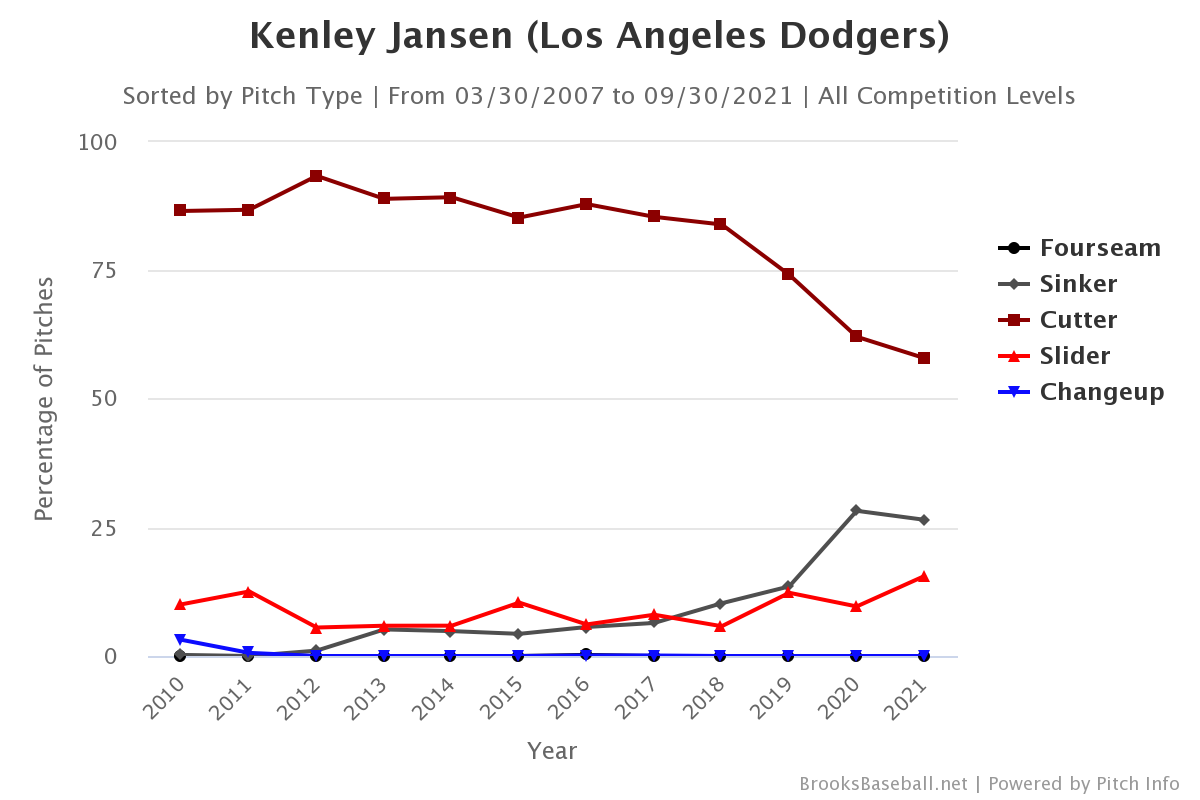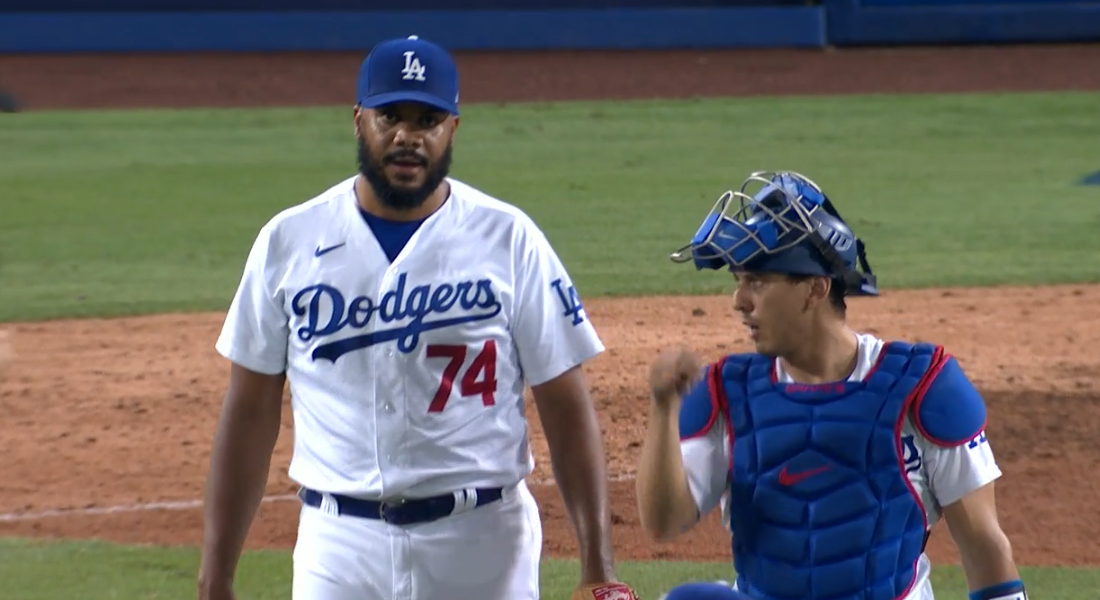While it obviously was not the main story in last night’s dramatic win over the Padres, Kenley Jansen‘s 10-pitch save was a fitting exclamation point. He threw 10 pitches and struck out the side, looking about as good as he has all year:
The outing continued what has been a quiet hot streak for Jansen. Since August 6th, he has allowed two earned runs in 26-1/3 innings (0.68 ERA). Jansen has struck out 34 batters in that stretch and walked eight. Opposing hitters have only managed to barrel one of the 51 balls they have put in play in that span, per StatCast’s definition.
It’s a significant departure from both Jansen’s uneven season start and his stretch of three consecutive blown saves in July. At various points of the season, fans (rightfully) called for Jansen to get less time at closer, especially given Blake Treinen‘s dominant season. However, down the stretch, Jansen has cemented his hold on the closer role, particularly as Treinen has looked more mortal of late.
As the season draws to a close, it’s worth looking at Jansen’s winding path to where he is now. Early this season, I had begun writing about Jansen’s hot streak in May, and was going to point out a dramatic increase in spin rate. However, as the sticky stuff crackdown hit, that change didn’t really … stick:

For context, Jansen’s cutter has generally averaged between 2550 and 2600 RPM throughout his career, so the overall spin has settled about where it was before. However, it’s still a significant change from what was bringing him success early.
With spin rate changes, it’s important to look at how that impacts pitch movement specifically. After the crackdown in June, Jansen did lose about an inch of vertical break on his cutter, and that vertical break has been one of the main factors that has brought him success over the years. However, as that vertical break decreased, Jansen has gained horizontal movement on the pitch:

In short, Jansen has less spin, but that spin has been more efficient at making the baseball move in a way perceived by hitters, so the movement loss caused by the spin rate drop has not been significant. Over the past four months, Jansen’s cutter spin has been fairly close to where it was in 2020, but he’s getting almost two more inches of rise on the ball and the same amount of run. That, combined with the increased velocity this season, has made him significantly harder to hit.
Jansen’s increased spin efficiency has also played into his evolution as a pitcher as a whole. Even in his prime, his cutter never had as much horizontal movement as it has now, which points to horizontal movement not being the most important factor for him. He was missing way more bats with a pitch that rose more and cut less. However, the extra movement can let him pair his pitches well, which is important because he’s throwing fewer cutters than ever this season:

While the complaints about consistency are still valid, Jansen is pitching as well as he has in years. Jansen’s stretch against the Giants may be pointed to for why the Dodgers are likely to play in the Wild Card Game next week, but the same could be said of any player’s coldest stretch of the season when margins are this thin. However, the future is more important than lingering on the past, and Jansen looks more than ready to fill the Dodger closer role in October.
 Dodgers Digest Los Angeles Dodgers Baseball Blog
Dodgers Digest Los Angeles Dodgers Baseball Blog
